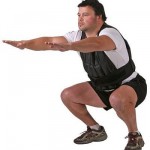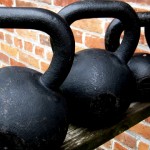Welcome Back!
Here is a simple and intense 2 -part workout, each of which you can perform 3 times a week in the comfort of your own home, at the park or beach using just your bodyweight.
It combines strength with intense cardio and uses the interval / HIIT protocol. This means that it has a high metabolic cost, will burn fat during the workout and more importantly for hours afterwards.
Background Information:
- A circuit is when you move from one exercise to the next without resting in between.
- Then rest for no more than 2 minutes before doing the next circuit.
- All rest should be ‘active’ rest where you do not stand still but just keep moving by walking around. Not only will you get your breath back more quickly, but you will add the overall metabolic cost.
- Reps are a guide only – if you can do more reps then do so, if less then that’s okay – match your efforts to your capability.
- If push ups are too difficult substitute them with push ups from your knees.
- Chin / Pull ups: if you can’t do the reps then use one leg on a secure (ie won’t slip or tip) chair to assist in pushing you to the top of the movement.
- Once there ‘lock’ your arms & back and fight your weight all the way down. This called an eccentric contraction and will give you sore muscles but will also help you develop strength more quickly.
- Concentrate on bringing your elbows to your ribs rather than your chin over the bar. This activates your back .
- Rope Jumping (skipping) count every second step. If 100 is too many aim for 50 & then work up from there.
- Add 1 more round each week until you are doing 8 rounds, and then try another workout.
- Try to add at least 1 rep each workout to your push ups, lunges & squats. Aim for 10 reps with the Chin / pull ups. (When you get here you will be stronger than just about everyone else you’ll come across in your life!)
Work out #1:
Three (3) rounds of:
- Rope Jumping, 100 Count
- Push Ups, 10 reps
- Forward Lunges, 10 reps each leg
- Rope Jumping 100 Count
- Chin / Pull ups, 5-10 reps
- Squats, 20 reps
- Rope Jumping, 100 count
Complete 1 circuit and rest for 2 minutes and then go again until you finish all 3 rounds. Do this 3 days a week.
Work Out #2
Do this work out the days in between the body weight workout above – 3 days a week.
Go to the park (or if you are feeling particularly adventurous) the beach and do some sprints.
Why sprint? Well ever seen a fat sprinter?
Sprinting fits into the HIIT protocol, is challenging, has a high metabolic cost and will help you burn fat. It also gives your workouts balance. It should take no more than 20 minutes.
- Gently jog around the park / along the beach to make sure that your hips, knees & ankles are loose and your leg muscles are warmed up.
- Step out 50 metres
- Run the 50 metres as fast as you can
- Don’t stop moving at the 50 metre mark but drop to walking / jogging speed and take a 2 minute period whilst still moving.
- This ‘active rest’ is important as it helps move lactic acid out of the working muscles and stops them from tightening up.
- Keeping moving also adds to the overall metabolic cost and post workout ‘Afterburn’.
- Repeat until you have done 3 rounds.
- Work up to 10 rounds by adding 1 round every second work out.
Do some hamstring & quad stretching afterwards when the muscles are loose & pliable and stretching will do the most good.
Upping the Ante:
Body Weight Work out:
Once you are able to hit or exceed the rep targets in the body weight work out you can add intensity a number of ways.
- You can do more reps
- You can do more rounds
- You can add exercises into each round (add a set of burpees / squat thrusts after the push ups and after the Chin ups for example)
- You can vary your exercises (try spiderman push ups instead of regular ones, or jumping lunges instead of split ones for example.)
- You can add weight via a vest.
NB weighted vests are NOT recommended for chin ups – This is for 2 reasons – firstly using your own bodyweight on this exercise is challenging enough by itself and it will take some time for you to work up to doing 10 reps a time. Secondly, and depending upon the type of home chinning bar you are using, you will find that most home chinning bars are not strong enough to handle added weight – I weigh 100KG and if I added even the lightest vest I own I will be close to its top rating of 110 kg.
However if you are using a chinning bar that is part of another, stronger set up feel free to add weight once you can do 10 reps. Adding weight before then will be counterproductive.
Sprint Intervals:
- Take note of your time and try to get faster over the same distance.
- Increase the number of rounds.
- Increase the distance from 50 to 75 metres and then from 75 to 100.
- Try doing your sprints uphill
- If at the beach try doing using the dunes (super tough!!)
- Set a timed protocol where you sprint for 20 seconds, jog / walk for 40 and then repeat for a period of 5 minutes initially working up from there.
-
Use Tabata intervals – 8 rounds of sprinting for 10 seconds followed by 20 seconds of active rest.
- You can add weight via vest – again be careful – the vest must not only fit snug enough so that the weights don’t beat you half to death by moving around whilst you are running but also allow your chest to move freely so you can breathe. NOT recommended except for those looking to become superhuman.
Well there you have it a simple, do-it-in-the-comfort-of-your-own-home work out that fits into my philosophy of reconditioning & improving the efficiency of your metabolism through interval / HIIT training.
You will burn fat and become leaner just with the body weight training – adding in the sprinting will increase your fat burn and metabolic efficiency but is not an absolute necessity.
However your results will be greater if you do both.
Let me know what you think and don’t forget to ‘Like’ use on Face Book below…










